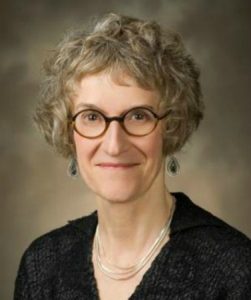An anthropological view

Dr. Julie Cruikshank is Professor Emerita in the Department of Anthropology at the University of British Columbia. [Photo courtesy of UBC]
Julie Cruikshank spent the 1980s and early ’90s working with Yukon First Nations women to document their peoples’ stories. Her transcripts have been made into the book, Life Lived Like a Story, in which the linguistic anthropologist describes her interactions with their way of life to be “the foundational experience of my life.”
“It was a kind of really tremendous change happening in people’s sense in the community and in the world,” Cruikshank recalls. But at the time, “it was much more political than in the arts.”
During her fieldwork with Yukon First Nations women, the anthropologist was already working within changing societal currents. The timing was not quite ready for arts to step into the spotlight, but the value of a distinct First Nations identity was gaining traction.
“There was always this desire to get these foundational stories – whether expressed in words, or in artistic reproduction – into the world, and for young people,” Cruikshank says. “Some of the young women I knew said, ‘We want to know about [our] grandmothers’ lives, because it’s important to get that into the land claim.’ ”
Cruikshank recalls her side conversations: “A number of people said, ‘we want these stories to get outside. This is your job now, to get these stories outside,’ ” with “outside” being further than Whitehorse and even beyond Yukon’s borders.
Cruikshank laughs as she describes her research techniques and the technology available to her in the ’80s and early ’90s as she worked towards Life Lived Like a Story – she had considered documenting her conversations through film to preserve even more of their authenticity of subject voices, but says access to the technology was limited to very skilled filmmakers.
“I had met a professional filmmaker who said, ‘You should be doing it this way,’ but we had no cameras, no anything.” She resorted to using a portable tape recorder that took little cassette tapes, “that was state-of-the-art at that time.”
On the other hand, Cruikshank says it’s hard to tell how the women would have responded with having a true-to-life capture of their activities. “I don’t think the women would have been as comfortable with the cameras,” Cruikshank says. She herself felt an unease with sharing personal space with women whilst armed with a machine: “Even having that little tape recorder, I felt it was kind of invasive.” At the outset, Cruikshank would write notes as quickly as possible during her interviews, then go home and type out the notes before reading them back to her subjects, until: “One day, one of the women said, ‘Why don’t you get a tape recorder, and you’d get it right the first time?’ ”
Cruikshank’s research helped to establish a positive feedback system within Indigenous communities. “I think at that point, it was kind of a point of pride for people to be able to have something that they could [show] their grandmother,” she says. In addition to enriching the communities’ cultural bank, Cruikshank contributes more concretely to the futures of community youth. Notably, she established a scholarship for First Nations youth to pursue post-secondary education sustained by proceeds from sales of Life Lived Like a Story. Between 1993 and 2012, 19 students received $300 apiece.
“We were very clear that any royalties of any kind would go back to this scholarship,” Cruikshank says. “I think that the one concern at that point was that people might record these stories and then be making money from them in some way.”
Cruikshank is happy to support all generations of First Nations in their continued revitalization. She has been following the topic of Truth and Reconciliation over the course of its evolution since her fieldwork days, but it is extensive to unpack.
“I remember at that time thinking, in some ways there’s two things going on here: there’s Truth, and there’s Reconciliation,” Cruikshank says. “I don’t think that’s a simple blend in any way whatsoever – I think that sometimes we think things are going forward, and then I talk with other people and I hear perspectives from my friends in the Yukon that made me think that the process is far more complicated.”
At the time of her fieldwork, her actions had been guided by the women and their wishes, and she worked without any personal agenda. “I just listened to friends who were more my age and listened to mothers and grandmothers with whom I was working, trying to do the best I could,” Cruikshank says. “I’m sure there were probably things that might have been mistakes. It was a process for all of us. It was all very new.”
The road to cultural revitalization is a joint effort; recognizing this, Cruikshank made the conscientious decision to step aside and let those who are currently in those circles take up the mantle in her place.
“It’s very important for me to hear now from the daughters and granddaughters of the women I worked with, what they think about what’s going on. I hope we’ll have many more over the years.”
“[In the 1980s and 90s,] anthropology was changing very much. There was a big shift from this outsider perspective to understanding…there was a lot more interest in how people frame their own experiences.”